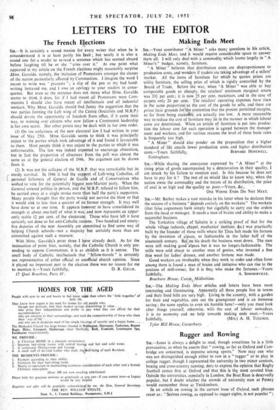Making Ends Meet
Sta.—Your contributor " A Miner " asks many questions in his article, Making Ends Meet, and it would require considerable space to answer them all. I will only deal with a commodity which looms largely in " A Miner's" budget, namely, furniture.
" A Miner" believes that distribution costs are disproportionate to production costs, and wonders if traders are taking advantage of a sellers' market. All the items of furniture for which he quotes prices are utility furniture, the selling price of which is rigidly controlled by the Board of Trade. Before the war, when "A Miner" was able to buy 'comparable goods so cheaply, the retailers' minimum marginal return was 33} per cent.; it is now 25 per cent, maximum, and in the case of carpets only 20 per cent. The retailers' operating expenses have risen in the same proportion as the cost of the goods he sells, and there are prima facie grounds forhhe contention that the present permitted margins, so far from being exceaille, are actually too low. A more reasonable way to reduce the cost of furniture may lie in the manner in which labour costs are determined. When an article of is furniture is put into produc- tion the labour cost for each operation s agreed between the manage- ment and workers, and for various reasons the level of these basic rates is frequently too high. " A Miner" should also ponder on the proposition that a higher standard of life entails lower production costs and higher distribution
Nottingham.


































 Previous page
Previous page